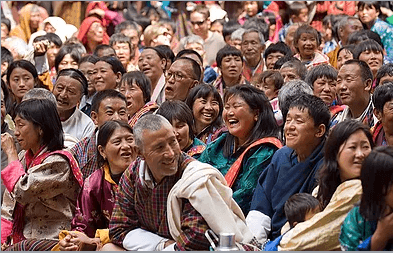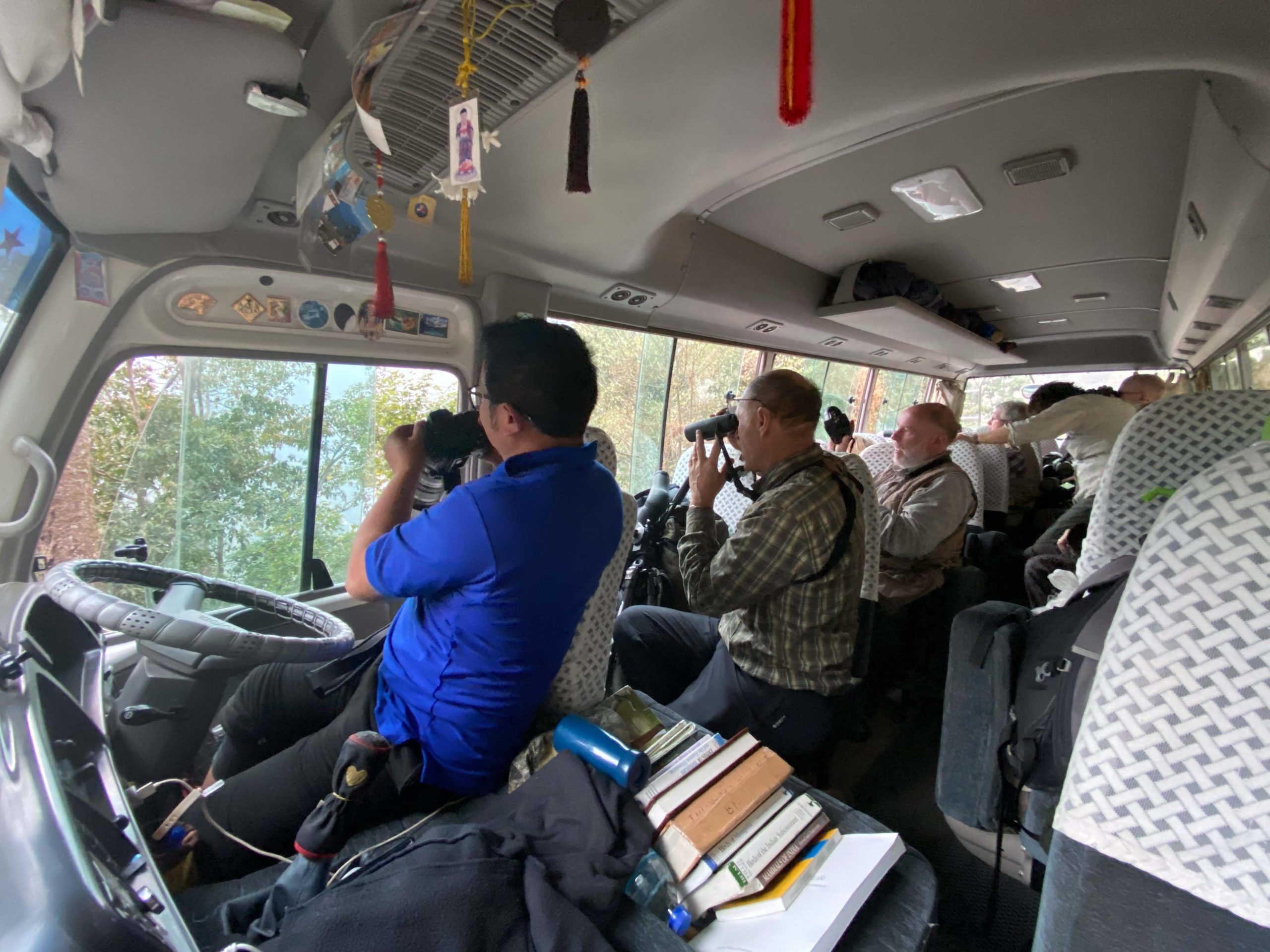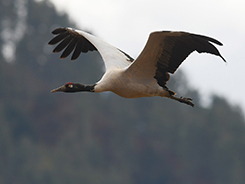15 Days – Most Popular Birding and Mammal Watching tour in Bhutan



Trip Overview
Description
Bhutan has been protected by both its isolation within the Himalayas and the topography of its mountainous land, resulting in over 70% of the land remaining forested with 60% protected by 10 National Parks and Wildlife Sanctuaries. The diverse range of habitat varies from sub-tropical jungles at 150m to alpine meadows at over 4,500m, supporting an extraordinary range birds and wildlife. Today, Bhutan is considered to be one of the top ten bio-diversity hot spots in the world with over 780 recorded species of birds and lies within one of the 221 Global Endemic Bird Areas with 28 species of birds endemic to Eastern Himalayas.
Our Spring birding tour will take you through the most amazingly beautiful landscape, full of birding excellence, where we should encounter some 350 species of birds including the country’s star attractions like the critically endangered White-bellied Heron, Himalayan Monal, Satyr Tragopan, Rufous-necked Hornbill, Beautiful Nuthatch and Ward’s Trogon. In addition to the great number of birds, we should also find over 14 species of mammals and amazing variety of butterflies and flowers.
There will also be time to see the amazing architecture, visit dzong’s and meet the friendly Bhutanese people. Overall, experience the unique culture of Bhutan, expanding your interests but not compromising your main objectives!
| Number of Guests | Price Per Guest |
|---|---|
| 1 | US $ 5,360 |
| 2 | US $ 5,220 |
| 3-12 | Twin sharing cost: US $ 5,080 |
Single Occupancy (Optional) – US $350
Flights are not included in the tour cost.
Brief Itinerary
This morning you take the Drukair/Bhutan Airlines flight to Paro, where you should have good views of the Himalayas, including many of the highest mountains in the world. After clearing customs and immigration, you will be met by your guide from Langur Eco Travels.
Next we will stop by the Pa Chhu river, where camouflaged amongst the glacial stones, Himalayan riverine species such as the Ibisbill can be seen as it dips in the snowmelt, searching for food. In this area we should also find; Brown Dipper (fairly common along many of Bhutan’s river), Common Snipe, Common and Green Sandpipers, Plumbeous Water Redstart, Common Hoopoe, Himalayan Buzzard, Common Kestrel, Grey-backed Shrike, Russet Sparrow, Rosy Pipit, Siberian Stonechat, White Wagtail, Rufous-breasted Accentor and Wallcreeper (winter visitor).
Northward migration will be underway and many of the valleys throughout Bhutan act as important conduits, therefore, it is possible that you may see species as yet not recorded in Bhutan.
Overnight: Hotel Olathang or similar, Paro, 2,300m. (Meals: B, L, D).
An early morning departure for our journey up through ancient high boreal forests to Chele La at 3,780m, the highest point we will reach on this tour. Along this route we can look out for Grey Nightjar, often seen on the roadside at dawn. Arriving at the pass there are breathtaking views of the high Himalayan peaks of Jhomolhari (7,219m), Jichu Drake (6,989m) and down into the Paro and Ha valleys.
Amongst the many regular birds we will search in particular for; Himalayan Monal, Blood Pheasant (often feeding obligingly along the roadsides), Long-legged Buzzard (rare), Himalayan Cuckoo, Wood Snipe (very rare), Rufous-fronted and Yellow-browed Tits, Greenish Warbler, Red-tailed Minla, White-browed Fulvetta, Hodgson’s Treecreeper, Black-throated and Dusky Thrushes, Blanford’s and White-browed Rosefinches, Collared Grosbeak, White-throated Redstart, White-browed Bush Robin, Alpine Accentor, Plain Mountain Finch (often seen in big flocks of up to 200 birds), Red-headed Bullfinch and the stunning Spotted Laughingthrush,
After breakfast we will continue birding the beautiful areas of Chele La before gradually making our way back to Paro and continue east to Thimphu city.
Overnight: Hotel Yak & Yeti or similar, Thimphu, 2,300m. (Meals: B, L, D).
Today we must leave early in order to see the high Himalayas as dawn breaks over Dochu La at 3,150m. It is an awe-inspiring sight, where prayer flags flutter in the breeze and 108 white chortens greet us!
Exploring the mixed broad-leafed forests at Dochu La, we should find an incredible wide range of birds which may well include, Hodgson’s Hawk Cuckoo, Darjeeling Woodpecker, Rufous-vented Tit, Buff Barred Warbler, Streak-breasted Scimitar Babbler, Chestnut-crowned and Grey-sided Laughingthrushes, Rufous Sibia, White-collared Blackbird, White-browed Shortwing, Slaty Blue Flycatcher, Green-tailed Sunbird and Olive-backed Pipit.
Continuing to Lampelri we will explore the Royal Botanical Park where we may find, Hill Partridge, Eurasian Jay, Rufous-bellied Woodpecker, Red-billed Leiothrix, Fire-capped Tit, Blue-fronted Redstart, Verditer Flycatcher, Blue-fronted Robin (very shy and rare), Dark-breasted Rosefinch, the amazing looking Scarlet Finch and with a bit of luck, a much rarer Maroon-backed Accentor.
Eventually we arrive in Punakha where we will take a short cultural break to visit the majestic Punakha Dzong built in 1637, situated on a promontory at the confluence of the Mo (mother) and Pho (father) Chhu (river), Punakha Dzong is known as the “Palace of Great Happiness” and considered to be one of the most beautiful Dzongs in Bhutan.
Looking around our hotel grounds in Punakha we should find Slender-billed Oriole (localized), Scaly-breasted Munia, and as nightfall’s we can try for the resident Collared Scops Owl.
Overnight: Meri Puensum Resort or similar, Punakha, 1,300m. (Meals: B, L, D).
In the morning we will bird along the Puna Tshang Chhu valley looking for some water birds such as, Pallas’s Fish Eagle (rare and globally endangered), Osprey, Bar-headed Geese, Ruddy Shelduck (abundant during winter months), Gadwall, Eurasian Wigeon, Mallard, Indian Spot-billed Duck (rare), Northern Shoveler (rare), Tufted Duck (rare), Great-crested Grebe (rare), Goosander, Grey Heron, Little Egret, Great Cormorant (common), River Lapwing, Long-billed and Little Ringed Plovers, Common Greenshank, Pallas’s Gull (rare), White-throated Kingfisher, White-browed Wagtail, Spotted Dove and in the nearby paddy fields we should find the scarce Richard’s Pipit.
Leaving Punakha we take the winding mountain road up through oak and rhododendron forests, festooned with lichens towards Lawa La at 3,350m. Along these diverse habitats we will look for the areas top attractions such as: Ward’s Trogon (a montane species found only in the Eastern Himalayas), the strange looking Long-billed Thrush and the chunky Spot-winged Grosbeak.
From Lawa La we will descend into Phobjikha valley stopping at Gangtey to visit the largest Nyingmapa monastery in Bhutan, set on a spur above the Phobjikha valley and surrounded by the quaint village of Gangtey.
We stay overnight in the Phobjikha, considered to be one of the most beautiful valleys in Bhutan. Phobjikha is also the wintering ground of the rare and little-known Black-necked Crane (globally vulnerable), driven off the vast open plateau of Tibet by the ferocity of its high altitude winter, the cranes find refuge here from November until March.
Also within the valley we can look for the areas specialties like, Oriental Skylark (fairly common but rare elsewhere in Bhutan), Red-billed Chough (seen quite often in huge flocks), Hen Harrier (at least a pair), Upland Buzzard, and Lammergeier (also known as Bearded Vulture).
Overnight: Gakiling guesthouse or similar, Phobjikha, 2,800m. (Meals: B, L, D).
Starting early we will travel eastwards to explore the high boreal forests of Pele La, 3,350m hoping to find Himalayan Vulture (often found in flocks of up to 30 birds soaring high above Pele La), Solitary Snipe (a rare inhabitant of the roadside marshes), Lesser Cuckoo, the amazing Black-faced Laughingthrush, Hume’s Bush Warbler (a bamboo dweller), Short-billed Minivet, Rufous-vented Yuhina, Eurasian Tree Sparrow, Dark-rumped Rosefinch, Crimson-browed Finch, Red Crossbill, Brown Bullfinch and Little Bunting.
We continue our birding as we travel through beautiful rhododendron forests to the village of Chendibji, where a Nepalese styled Chorten is picturesquely situated alongside the river.
The road then takes us through the village of Tangsibji where we stop near a small stream looking for a pair of Black-tailed Crake that are at resident. We eventually arrive in Trongsa for an overnight stay.
Overnight: Yangkhil Resort or similar, Trongsa, 2,000m. (Meals: B, L, D).
Today we drive along the quiet, forest road towards Tingtibi. Blue Whistling Thrushes fly off the road at regular intervals, and we keep a sharp lookout for Spotted Forktail at the beautiful mossy waterfalls that are a feature of the journey.
The whole section of todays journey is spectacular as we look for an amazing variety of rare and special birds in the mixed broad-leafed forests that stretches from 2000m down to 700m. This is also home to the Endangered Golden Langurs, which can be seen in small groups along the roadside forests.
In the early part of the morning we will look for species such as Mountain Hawk and Bonelli’s (rare) Eagles, Crested Goshawk, Barred Cuckoo Dove, Wedge-tailed Green Pigeon (seen in mixed feeding flocks), Large Hawk and Grey-bellied Cuckoos, Green-billed Malkoha, Red-headed Trogon (one of the finest trogons in the world), the noisy Great Barbet, Speckled Piculet, Lesser Yellownape, Bay Woodpecker, Long-tailed Minivet, Large Niltava, Green-backed Tit, White-throated Laughingthrush, Spot-winged Starling (rare), Ashy Bulbul, Blyth’s Leaf Warbler, White-tailed Nuthatch, Rusty-flanked Treecreeper, Bar-winged Flycatcher Shrike, Pygmy Blue and Ferruginous Flycatchers, Blue Rock Thrush, Long-tailed Broadbill, and Tibetan Siskin.
Arriving in the warmer sub-tropical area of Tingtibi, we will look for Crested Kingfisher (by the Mangde river), Lesser Coucal, Rufous Woodpecker, Eurasian Sparrowhawk, Peregrine Falcon, Common Cuckoo, the stunning looking Crimson Sunbird, Daurian Redstart (a rare vagrant), beautifully coloured Emerald Dove, Brown Shrike, Common Tailorbird, Oriental Magpie Robin, Common Stonechat, and several flocks of White-crested and Greater Necklaced Laughingthrushes.
Overnight: Hotel Twang or similar, Tingtibi, 600m. (Meals: B, L, D).
After a quick tea/coffee at our hotel, we will drive along the Tingtibi – Gomphu road, exploring the rich bamboo forests, looking for the areas top birds such as Tawny Fish Owl (at a roosting site at Tingtibi), Red Junglefowl, White-browed Piculet, White-hooded Babbler (the only known site in Bhutan), Rufous-faced Warbler (rare), Pale-headed Woodpecker (very rare and elusive), White-browed Scimitar Babbler, Lesser Rufous-headed Parrotbill, Long-tailed Sibia (seen in flock), Slaty-backed Forktail, Blyth’s Paradise Flycatcher (previously thought to be Asian Paradise Flycatcher which has been split into 3 separate species), Pin-tailed Green Pigeon (fairly common in the area but rare elsewhere in Bhutan), the amazing Great Hornbill (globally vulnerable), Eurasian Wryneck, Barred Buttonquail (rare), Banded Bay Cuckoo, Blue-bearded Bee-eater, Large Woodshrike, Scarlet Minivet, White-rumped Munia, Silver-eared Mesia, Yellow-bellied and Yellow-vented Warblers (both are fairly common in these area but rare elsewhere in Bhutan), Common Hill Myna, Black Redstart, Chestnut-bellied Nuthatch, Blue-throated Blue Flycatcher, Forest Wagtail (rare), Collared Falconet, and along the Mangde chhu (river) we will look for perhaps the rarest bird seen in Bhutan the critically endangered White-bellied Heron, the population of this birds is estimated at only 60 individuals left in the wild.
After breakfast, we will continue birding the beautiful areas of Gomphu searching for Blue-throated Barbet, Squire-tailed Drongo Cuckoo, Nepal Fulvetta, White-naped Yuhina (undoubtedly the most beautiful yuhinas in Bhutan), Sultan Tit, Grey-chinned Minivet, Bronzed Drongo, Rufescent Prinia, Rufous-necked Laughingthrush, Black-crested and White-throated Bulbuls, and with a bit of luck, we could also find the tougher species Rufous-throated Partridge (near-threatened).
Our hotel in Tingtibi is situated in the sub-tropical forests, where one can occasionally hear the eerie calls of the scarce Spot-bellied Eagle Owl.
Overnight: Hotel Twang or similar, Tingtibi, 600m. (Meals: B, L, D).
Today we will start early to get to the habitat of the Beautiful Nuthatch (globally vulnerable), allowing ourselves plenty of time to locate and see this amazing and rare bird. Other species we will hope to encounter here include Shikra, Crested Serpent Eagle, the very colourful Common Green Magpie, Mountain Imperial Pigeon, Asian House Martin, Fork-tailed Swift, Grey-capped Pygmy Woodpecker, Golden-throated Barbet, Black Drongo, Blue-winged Laughingthrush (an impressive species), Grey-hooded Warbler, Pale Blue and Little Pied Flycatchers, Black-winged Cuckooshrike, Black-throated Prinia, Blue-winged Minla, Small Niltava (view of a glowing male is not to be missed), Grey-throated Babbler, White-browed Shrike Babbler, Rufous-winged Fulvetta, Striated and Black-chinned Yuhinas, White-bellied Erpornis (formally known as White-bellied Yuhina), Black-throated Sunbird, Grey Bushchat, and Grey Wagtail.
After breakfast we will continue birding along the Zhemgang road, stopping at prime locations and to absorb the sheer beauty of this part of Bhutan. List of possibilities along here include Indian Cuckoo, Common Pigeon, Black Eagle, Oriental Turtle Dove, Grey-backed Shrike, Oriental (Crested) Honey Buzzard, Red-vented and Himalayan Bulbuls, Red-faced Liocichla (very beautiful bird), Rusty-cheeked Scimitar Babbler, Blue-capped Rock Thrush (male of which is amazingly beautiful), Lemon-rumped Warbler, Brown-flanked Bush Warbler, and White-tailed Robin.
Just before arriving in Trongsa we will stop at Bubja near a high cliff-face where we will look for a pair of Yellow-rumped Honeyguide (near-threatened) installed near nests of Giant Rock Bees that hang from a cliff.
Overnight: Yangkhil Resort or similar, Trongsa, 2,000m. (Meals: B, L, D).
This morning we will gradually make our way up to Yotong La Pass (3,450m) through cascading waterfalls and more magnificent rhododendron and magnolia forests. Our camping crew will be waiting with hot breakfast setup on the roadside as always, so that we can bird and breakfast at the same time!
Some of the regular birds of the area include, Besra, Steppe Eagle (globally endangered), Plaintive Cuckoo, Hodgson’s Redstart, White-capped Water Redstart, Rufous-gorgeted and Ultramarine Flycatchers, Russet Sparrow, Black-billed Magpie (endemic to Bumthang valley), Brown Parrotbill, Chestnut-headed Tesia, Indian Blue Robin, Yellow-bellied Flowerpecker, Goldcrest, Winter Wren, Russet Bush Warbler, Red-throated Thrush, Yellow-breasted Greenfinch, Himalayan Beautiful Rosefinch and White-winged Grosbeak.
From the pass we descend through conifer forests to the upland valley of Chumey, the religious heartland of Bhutan where there are many ancient cultural and religious sites dating as far back as the 7th century.
In the late afternoon we will drive up to the nearby Tharpaling monastery to take another chance to see the spectacular Himalayan Monal, as they feed on the left over food thrown by the monks. The birds have now become accustomed to this practice. Other birds in the area include Snow Pigeon, Large-billed Crow and Altai Accentor.
In Bumthang we can also search for the uncommon Himalayan Owl.
Overnight: Kailas Guesthouse or similar, Bumthang, 2,800m. (Meals: B, L, D).
Leaving Bumthang valley we climb through forests of larch, silver fir, spruce and towering hemlocks, until Thrumshing La (pass) at 3,780m, here we will begin to explore this magnificent forests road where we have our second opportunity to see the stunning, Blood Pheasants as feed by the road side in the mist and where, once more we have breath-taking views of the Eastern Himalayas. From the pass we drive down to the nomadic village of Sengor. Along these high altitude road we will be looking for some of Bhutan’s highly prized birds such as the spectacular Satyr Tragopan a species that often provide us with close lengthy views, Great Parrotbill, the amazing Slender-billed Scimitar Babbler another mega bird for Bhutan, Speckled Wood Pigeon (seen in small flock), Alpine Thrush, Hoary-throated Barwing (fairly common in this area but very range restricted to Eastern Himalayas), other numerous species in the area include, Yellow-billed Blue Magpie, Green Shrike Babbler, flocks of Whiskered Yuhinas, Coal and Grey-crested Tits, Large-billed Leaf Warbler, Fire-breasted Flowerpecker and the photogenic Bar-throated Siva (previously known as Chestnut-tailed Minla).
Along here one can also hope to see another top attraction for Bhutan the localized Bar-winged Wren Babbler.
Overnight: Trogon Villa or Chengala Farmhouse, Yongkola, 1,800m. (Meals: B, L, D).
The areas of Yongkola, Namling, Tshamang and Lingmethang are considered to be one of the finest birding locations in the world.
We have two full days to explore the pristine forests of Thrumshing La national park using a paved yet rarely used road and it is in this birding hotspot that we look for some of Bhutan’s most sought-after birds such as, Chestnut-breasted Partridge (globally vulnerable), the mega Rufous-necked Hornbill (widely distributed in Bhutan but rare elsewhere in the world), the amazing Yellow-throated and Golden-breasted Fulvettas, Gould’s Shortwing where Namling area is the only known site for this species in Bhutan, the weird looking Sikkim Wedge-billed Babbler (rare), Long-billed and Rufous-throated Wren Babblers (both of which are very rare in the world), Himalayan Cutia (another top bird), Coral-billed Scimitar Babbler, Himalayan Bluetail, Golden Bush Robin, Spotted Elachura (formally known as Spotted Wren Babbler), Broad-billed, Chestnut-crowned and Whistler’s Warblers, and the little known Black-headed Shrike-babbler, Nepal House Martin (big colony of nests on a overhanging cliff near Namling waterfall), Crimson-breasted Woodpecker, Black Bulbul, Scaly and Bhutan Laughingthrushes, Orange-bellied Leafbird, Yellow-bellied fantail, Rusty-fronted Barwing (often seen in mixed feeding flocks), Lesser Shortwing, Slaty-bellied Tesia, Scaly Thrush, Mountain Tailorbird, Yellow-cheeked Tit, and White-gorgeted Flycatcher.
After birding in the upper region of Yongkola, we have time to explore the wonderfully rich, warm broad-leafed forests of Lingmethang road where we hope to find, Rufous-bellied Eagle (another near-threatened species), Asian Barred Owlet, Asian Emerald Cuckoo, Grey-headed Woodpecker, Greater Yellownape, Maroon Oriole, Streaked Spiderhunter, Lesser Racket-tailed and Hair-crested Drongos, White-throated Fantail, Grey Treepie, Grey-bellied Tesia, Striated Prinia, Rufous-capped and Golden Babblers, Grey-headed and Greater Rufous-headed Parrotbills, Mountain and Striated Bulbuls, Brown-throated Treecreeper, Rufous-bellied Niltava, Common Rosefinch (on Tshamang road), Grey-cheeked and Black-faced Warblers, Dark-sided, Snowy-browed and Sapphire Flycatchers.
On one evening, we will take a short night drive hoping to find Bhutan Giant Flying Squirrel (which has been regularly seen on our birding tours to Yongkola), Owls and frogmouth we will look for include Hodgson’s Frogmouth (Yongkola is the only known regular site for this species in Bhutan), Brown Wood Owl (seen near settlements of Yongkola), Mountain Scops Owl (heard only on most of our Bhutan tours), and the more numerous Collared Owlet.
Overnight: Trogon Villa or Chengala Farmhouse, Yongkola, 1,800m. (Meals: B, L, D).
Our early part of the morning will be spent, birding along the cool broad-leafed forests of Namling region, here we can look for Black-eared Shrike Babbler, Chestnut-bellied Rock Thrush, Little Forktail (along the roadside waterfalls), Grey-headed Canary Flycatcher and Black-throated Parrotbill amongst many other regular birds.
After breakfast we will continue our birding along Sengor valley, looking for some of the special birds found in this higher mid temperate forest, such as Fire-tailed Myzornis (another specialty of Bhutan), Tickell’s Thrush, Scaly-breasted Wren Babbler, Fire-tailed Sunbird (perhaps the most special sunbirds in the world) and another opportunity to see the rare Satyr Tragopan.
From Sengor we will drive up to the high pass of Thrumshing La at 3,780m, stopping en-route to locate the scarce Fulvous Parrotbill and the shy Eurasian Woodcock.
From the pass we descend through forests of towering hemlock, spruce, silver fir and larch which provides us with further opportunities for Himalayan Monal, flocks of Blood Pheasants, as well as regular species like Spotted Nutcracker, Grey-winged Blackbird, Rufous-breasted Bush Robin (rare elsewhere in Bhutan), Gould’s Sunbird and Stripe-throated Yuhina.
Our final journey for today takes us through the picturesque village of Ura and descend to Bumthang valley where we overnight.
Overnight: Kailas Guesthouse, Bumthang, 2,800m. (Meals: B, L, D).
This morning we will take the 25 minutes flight to Paro, from your flight there are breathtaking views of Himalayan Mountains. Arriving in Paro we will visit Paro Dzong, the Fortress of the Heap of Jewels, which was featured in some scenes of the film ‘Little Buddha’ (1993). Built in1644, this 5 storey building has white-washed walls, magnificently carved and painted wooden doors and windows, which add to the sense of power and wealth required to build this fortress. Walking through the two guard houses we enter the courtyard where we can see the intricately carved central tower, considered to be one of the finest and most beautiful in Bhutan.
From here we will follow the stone path down to the Paro Chhu (river) and cross the Nyamai Zam – the wooden cantilevered bridge festooned with prayer flags.
Perhaps we can have another look at the enigmatic Ibisbill before heading on Chele La road, searching for the stunning Kalij Pheasant, hopefully feeding by the roadsides. Other species that frequent the area include, Northern Goshawk, Long-tailed Shrike, Ashy Drongo, Black-throated Tit, Grey-sided Bush Warbler, Ashy-throated Warbler, Pygmy Wren Babbler and Striated Laughingthrush.
Overnight: Hotel Olathang or similar, Paro, 2,300m. (Meals: B, L, D).
After breakfast we will drive to Paro airport and fly to Delhi, Kolkata, Kathmandu or Bangkok for your onward connections. (Meals: B & L).







